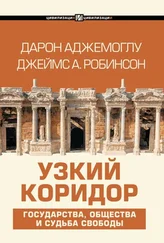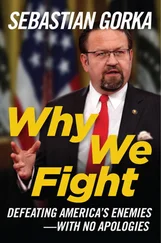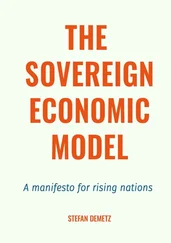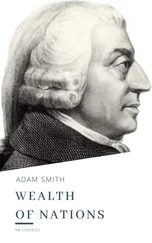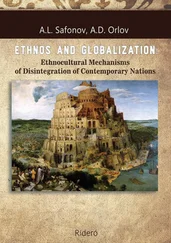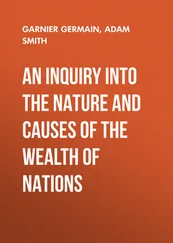One of the key pillars of the New Deal was the National Industrial Recovery Act. Title I focused on industrial recovery. President Roosevelt and his team believed that restraining industrial competition, giving workers greater rights to form trade unions, and regulating working standards were crucial to the recovery effort. Title II established the Public Works Administration, whose infrastructure projects include such landmarks as the Thirtieth Street railroad station in Philadelphia, the Triborough Bridge, the Grand Coulee Dam, and the Overseas Highway connecting Key West, Florida, with the mainland. President Roosevelt signed the bill into law on June 16, 1933, and the National Industrial Recovery Act was put into operation. However, it immediately faced challenges in the courts. On May 27, 1935, the Supreme Court unanimously ruled that Title I of the act was unconstitutional. Their verdict noted solemnly, “Extraordinary conditions may call for extraordinary remedies. But … extraordinary conditions do not create or enlarge constitutional power.”
Before the Court’s ruling came in, Roosevelt had moved to the next step of his agenda and had signed the Social Security Act, which introduced the modern welfare state into the United States: pensions at retirement, unemployment benefits, aid to families with dependent children, and some public health care and disability benefits. He also signed the National Labor Relations Act, which further strengthened the rights of workers to organize unions, engage in collective bargaining, and conduct strikes against their employers. These measures also faced challenges in the Supreme Court. As these were making their way through the judiciary, Roosevelt was reelected in 1936 with a strong mandate, receiving 61 percent of the popular vote.
With his popularity at record highs, Roosevelt had no intention of letting the Supreme Court derail more of his policy agenda. He laid out his plans in one of his regular Fireside Chats, which was broadcast live on the radio on March 9, 1937. He started by pointing out that in his first term, much-needed policies had only cleared the Supreme Court by a whisker. He went on:
I am reminded of that evening in March, four years ago, when I made my first radio report to you. We were then in the midst of the great banking crisis. Soon after, with the authority of the Congress, we asked the nation to turn over all of its privately held gold, dollar for dollar, to the government of the United States. Today’s recovery proves how right that policy was. But when, almost two years later, it came before the Supreme Court its constitutionality was upheld only by a five-to-four vote. The change of one vote would have thrown all the affairs of this great nation back into hopeless chaos. In effect, four justices ruled that the right under a private contract to exact a pound of flesh was more sacred than the main objectives of the Constitution to establish an enduring nation.
Obviously, this should not be risked again. Roosevelt continued:
Last Thursday I described the American form of government as a three-horse team provided by the Constitution to the American people so that their field might be plowed. The three horses are, of course, the three branches of government—the Congress, the executive, and the courts. Two of the horses, the Congress and the executive, are pulling in unison today; the third is not.
Roosevelt then pointed out that the U.S. Constitution had not actually endowed the Supreme Court with the right to challenge the constitutionality of legislation, but that it had assumed this role in 1803. At the time, Justice Bushrod Washington had stipulated that the Supreme Court should “presume in favor of [a law’s] validity until its violation of the Constitution is proved beyond all reasonable doubt.” Roosevelt then charged:
In the last four years the sound rule of giving statutes the benefit of all reasonable doubt has been cast aside. The Court has been acting not as a judicial body, but as a policymaking body.
Roosevelt claimed that he had an electoral mandate to change this situation and that “after consideration of what reform to propose the only method which was clearly constitutional … was to infuse new blood into all our courts.” He also argued that the Supreme Court judges were overworked, and the load was just too much for the older justices—who happened to be the ones striking down his legislation. He then proposed that all judges should face compulsory retirement at the age of seventy and that he should be allowed to appoint up to six new justices. This plan, which Roosevelt presented as the Judiciary Reorganization Bill, would have sufficed to remove the justices who had been appointed earlier by more conservative administrations and who had most strenuously opposed the New Deal.
Though Roosevelt skillfully tried to win popular support for the measure, opinion polls suggested that only about 40 percent of the population was in favor of the plan. Louis Brandeis was now a Supreme Court justice. Though Brandeis sympathized with much of Roosevelt’s legislation, he spoke against the president’s attempts to erode the power of the Supreme Court and his allegations that the justices were overworked. Roosevelt’s Democratic Party had large majorities in both houses of Congress. But the House of Representatives more or less refused to deal with Roosevelt’s bill. Roosevelt then tried the Senate. The bill was sent to the Senate Judiciary Committee, which then held highly contentious meetings, soliciting various opinions on the bill. They ultimately sent it back to the Senate floor with a negative report, arguing that the bill was a “needless, futile and utterly dangerous abandonment of constitutional principle … without precedent or justification.” The Senate voted 70 to 20 to send it back to committee to be rewritten. All the “court packing” elements were stripped away. Roosevelt would be unable to remove the constraints placed on his power by the Supreme Court. Even though Roosevelt’s powers remained constrained, there were compromises, and the Social Security and the National Labor Relations Acts were both ruled constitutional by the Court.
More important than the fate of these two acts was the general lesson from this episode. Inclusive political institutions not only check major deviations from inclusive economic institutions, but they also resist attempts to undermine their own continuation. It was in the immediate interests of the Democratic Congress and Senate to pack the court and ensure that all New Deal legislation survived. But in the same way that British political elites in the early eighteenth century understood that suspending the rule of law would endanger the gains they had wrested from the monarchy, congressmen and senators understood that if the president could undermine the independence of the judiciary, then this would undermine the balance of power in the system that protected them from the president and ensured the continuity of pluralistic political institutions.
Perhaps Roosevelt would have decided next that obtaining legislative majorities took too much compromise and time and that he would instead rule by decree, totally undermining pluralism and the U.S. political system. Congress certainly would not have approved this, but then Roosevelt could have appealed to the nation, asserting that Congress was impeding the necessary measures to fight the Depression. He could have used the police to close Congress. Sound farfetched? This is exactly what happened in Peru and Venezuela in the 1990s. Presidents Fujimori and Chávez appealed to their popular mandate to close uncooperative congresses and subsequently rewrote their constitutions to massively strengthen the powers of the president. The fear of this slippery slope by those sharing power under pluralistic political institutions is exactly what stopped Walpole from fixing British courts in the 1720s, and it is what stopped the U.S. Congress from backing Roosevelt’s court-packing plan. Roosevelt had encountered the power of virtuous circles.
Читать дальше


